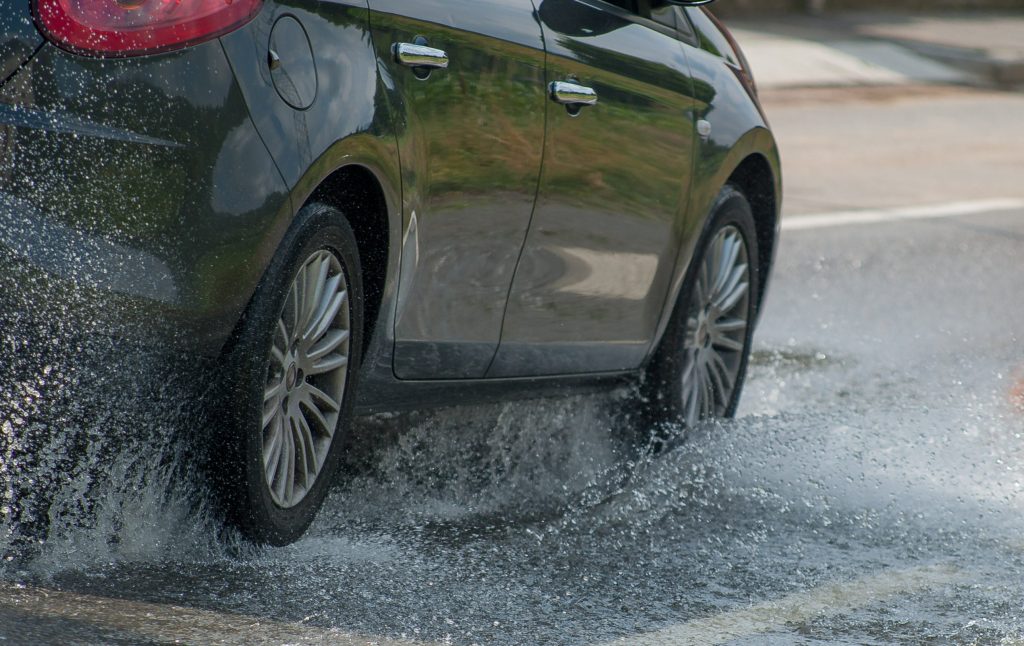Weather-Related Accidents Are More Fatal Than You Think!

The sheer power and unpredictability of tornadoes, hurricanes, and earthquakes can leave the bravest of us shaken up. The damage they create can be devastating, and forces of nature should be respected. However, many people do not show the same fear and respect for more common inclement weather. Did you know that common rainstorms and snowstorms cause exponentially more injuries than any tornado, hurricane, or earthquake. It’s true, and the personal injury lawyers at Patterson Legal Group will explain this fact, as well as how to avoid weather-related accidents.
Weather-Related Accidents Stats
The United States Department of Transportation (USDOT) states there are nearly six-million car accidents every year. 21% of all motor-vehicle crashes are weather-related accidents. This includes crashes caused by rain, sleet, snow, fog, and severe wind.
These are all conditions we deal with regularly in Kansas and Missouri, but many drivers are oblivious to inclement weather. Perhaps they’d take the weather more seriously if they knew that approximately 5,000 people are killed and 418,000 are injured in weather-related accidents every year.
A large percentage of these fatalities occur on wet pavement and during heavy rainfall–70% and 46% respectively. Wet pavement was responsible for nearly 900,000 crashes that resulted in roughly 300,000 injuries.
Winter conditions also account for a percentage of accidents–18% during snow or sleet and 13% on icy pavement. All in all, driving during inclement weather is much more dangerous than many drivers think.
Tips For Avoiding Weather-Related Accidents
The first step towards avoiding weather-related accidents is understanding how serious they can be. After that, there are many simple things that you can do in order to keep you and your passengers safe during inclement weather. Below are some valuable safety tips that our Kansas personal injury attorneys have learned after decades of representing car accident victims.
How to Drive on Wet Pavement
Check Your Speed: With wet pavement, there is a chance that your car will hydroplane. Hydroplaning occurs when your tires fail to make contact with the ground due to the loss of friction between the tire and pavement. Slow down to a comfortable speed, usually 5-10mph below the speed limit.
Watch For Flooded Areas: Flooding can accumulate along the side of the road during rainstorms and snowstorms, especially where the road meets the curb. Water tends to collect near the storm drains and can be particularly dangerous when traveling at high speeds. Be cautious when driving in the right lane and even in the left lane if there is a median along the road.
Pump Your Brakes: Rain will reduce the amount of friction between the brake pad and the tire. Pumping your brakes rather than suddenly slamming on them will reduce your chances of losing control during a sudden stop.
How to Drive on Icy Roads
Slow Down: Once we transition into the colder months, roads are more likely to get slick. Make sure that you slow down, at least 10mph below the speed limit.
Black Ice: Look out for black ice along the roads. Black ice is nearly invisible and frequently forms near intersections due to nearby drains. Try to slow down a couple hundred feet before the intersection to ensure you come to a complete stop.
Tailgating: Leave plenty of room between you and the car ahead of you. Unexpected stops from the car in front of you can result in rear-end crashes and the possibility of severe injuries.
Prepare Your Car For the Winter
Checking the weather before you drive is a great habit. Being proactive rather than reactive puts you in a better position in the event of inclement weather. This is especially important as winter approaches. Inspecting your vehicle’s windshield wipers, tire treads, fluid levels, and headlights before winter hits can help you avoid weather-related accidents during the winter.
Unfortunately, you may suffer a winter car accident no matter how safe you’re being. That’s one reason why it’s important to pack an emergency kit that includes flares, blankets, jumper cables, tow ropes, and an ice scraper. Having a proper emergency kit can be a huge help during a sticky situation.
If you need to pull over due to severe weather or car problems, alert other drivers of your position. Turn on your caution lights and move to the side of the road. Stay in your car until help arrives. Tips for driving in bad weather can be helpful, but sometimes the elements are too severe. It is always better to be safe when driving through inclement weather.
Contact Patterson Patterson Legal Group
The team at Patterson Legal Group hopes that you and your family are safe on the road, no matter the weather outside. Unfortunately, weather-related accidents can happen to anyone. Sometimes these accidents are caused by the negligence or recklessness of another party. If you believe that your accident falls into this category then contact us for immediate assistance.
Our team is available to serve you 24 hours a day, 7 days a week. You can call us at (816) 920-0000 or reach us through the Internet via LiveChat. Our lawyers have worked hard to gain a reputation for winning clients high settlements while treating them with the compassion and respect they deserve. Contact us today and you’ll soon learn why Patterson Legal Group is one of the most trusted personal injury law firms in Kansas, Missouri, and Oklahoma.
The information on this blog is for informational purposes only. It is not meant to serve as legal advice for an individual case or situation. This information is not intended to create an attorney-client relationship nor does viewing this material constitute an attorney-client relationship.





